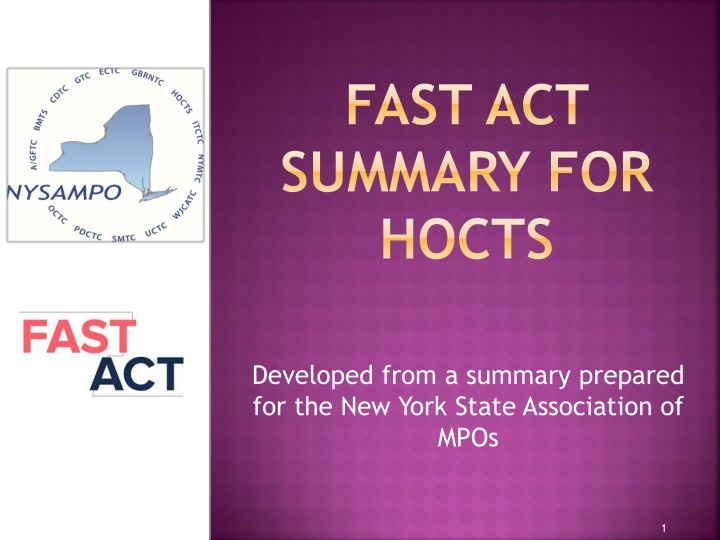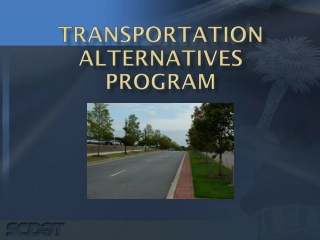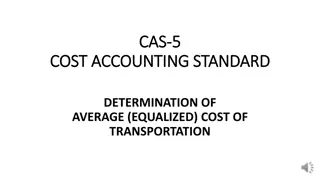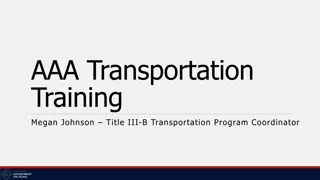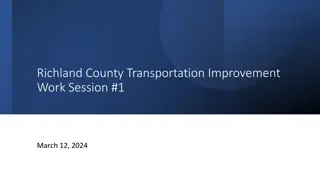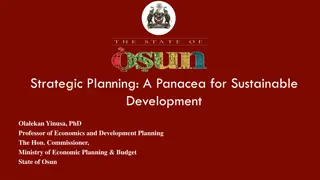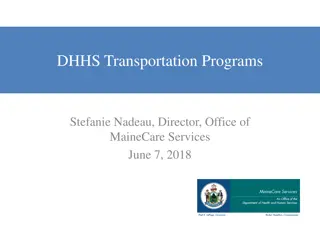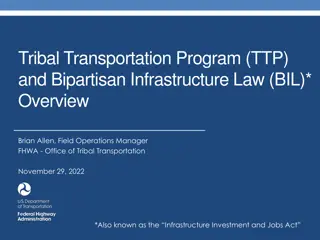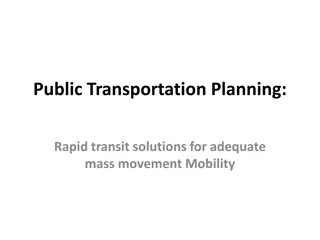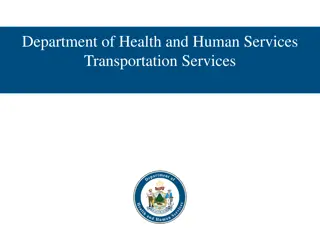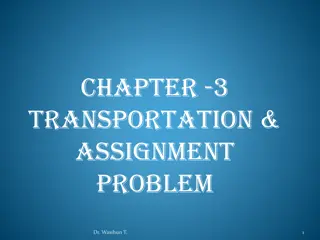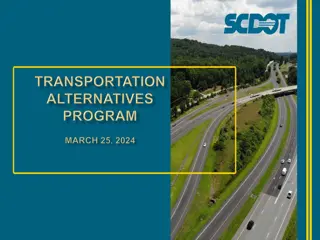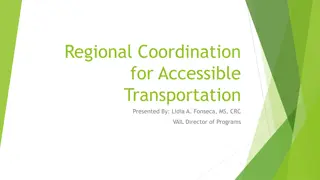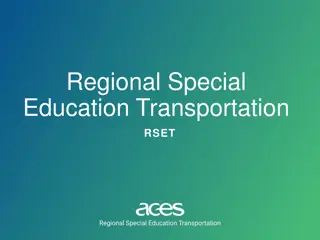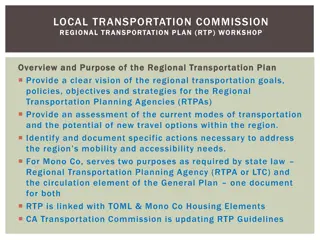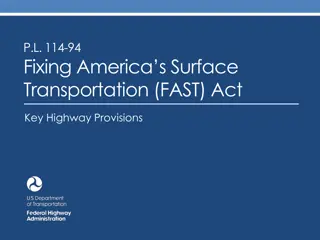Overview of FAST Act for Transportation Planning
The FAST Act, passed in 2015, authorizes federal programs for transportation development with a focus on surface transportation. It extends funding through 2020, totaling $304.7 billion. The Act aims to enhance resiliency, reliability, and stormwater mitigation in transportation systems. Planning factors have evolved over the years, incorporating considerations for long-range transportation plans. Policy changes and funding mechanisms under various authorizations impact program delivery and capital investments, emphasizing strategies to reduce vulnerability to natural disasters.
Download Presentation

Please find below an Image/Link to download the presentation.
The content on the website is provided AS IS for your information and personal use only. It may not be sold, licensed, or shared on other websites without obtaining consent from the author.If you encounter any issues during the download, it is possible that the publisher has removed the file from their server.
You are allowed to download the files provided on this website for personal or commercial use, subject to the condition that they are used lawfully. All files are the property of their respective owners.
The content on the website is provided AS IS for your information and personal use only. It may not be sold, licensed, or shared on other websites without obtaining consent from the author.
E N D
Presentation Transcript
FAST ACT SUMMARY FOR HOCTS Developed from a summary prepared for the New York State Association of MPOs 1
AUTHORIZING FEDERAL PROGRAMS Congress passes multi-year authorizations for the programs of the Federal Highway Administration (FHWA) and Federal Transit Administration (FTA) ISTEA (1991) TEA-21 (1998) SAFETEA-LU (2005) MAP-21 (2012) FAST Act (2015) Authorization establishes policy and sets maximum spending levels for each program 2
FAST ACT FIXING AMERICA S SURFACE TRANSPORTATION Passed on December 4, 2015 Five year authorization extends through Federal fiscal year 2020 (Sept 30, 2020) Total authorized spending $304.7 billion Modest increases in most programs Uses various funding mechanisms to avoid dealing directly with the annual shortfall in the Highway Trust Fund 3
FAST ACT FIXING AMERICA S SURFACE TRANSPORTATION Funding may not exceed authorized levels, but may be less Limits may also be established on how much of the funding may be obligated Congress may pass a rescission after the fact, and take some of the appropriated funding back 4
METROPOLITAN PLANNING MPO designation unchanged: base population 50,000; TMA designation 200,000 ISTEA began the policy of enumerating factors to be considered in the long range transportation plan; there have been small changes with each authorization. FAST adds two new planning factors: Improve the resiliency and reliability of the transportation system and reduce or mitigate stormwater impacts of surface transportation Enhance travel and tourism 5
POLICY AND PROGRAM MAP-21, passed in 2012, made a number of policy changes and program consolidations Rules of MAP-21 that guide program delivery are still in effect under FAST Act, but many have not yet been finalized Capital investments under the plan should include strategies to reduce vulnerability due to natural disasters 6
POLICY AND PROGRAM Focus on freight and its support of the national economy National Multimodal Freight Policy/ National Multimodal Freight Network Includes National Freight Network (highways); Class 1 railroads; major seaports; major air cargo hubs; inland waterways including St. Lawrence Seaway, Great Lakes Critical Urban Freight Corridors: in metro areas >500,000 population, MPO designates; in remaining metro areas, state designates in consultation with the MPO 7
POLICY AND PROGRAM Reinstates the competitive bus and bus facilities grant program at USDOT - $268M in 2016 growing to $344M in 2020 These remain in place under FAST Performance based planning and programming FTA programs consolidated Surface Transportation Block Grant Program: renames STP, but with no eligibility changes Transportation Alternatives Program (TAP) is no longer a named program; eligible purposes remain under a funding set-aside from STBGP 8
THE FUNDING PICTURE - FHWA FHWA Total $226.3 B Annual Average (millions) % change from 2015 National Highway Performance Program $23,280 +6.3 Surface Transportation Block Grant 11,654 +15.6 Transportation Alternatives Set-aside 760 +3.3 CMAQ 2,405 +6.1 HSIP 2,317 +5.7 Metropolitan Planning PL 343 +9.5 National Highway Freight Program (?) 1,249 (new) Nationally Significant Freight & Highway Program (?) 900 (new) 9
THE FUNDING PICTURE - FTA FTA Total $61.1 billion Program FY 2016 funding (millions) Notes 100 bus rule modified to include non-ADA paratransit 5307 (Urban formula) $4,530 Cost Effective Capital Investment Pilot Program 5339 (Bus & Bus Facilities) 428 (formula) 268 (discretionary) Continues joint planning language with FHWA 5303 (Metropolitan Planning) 131 New Starts max 60% FTA $; Small Starts threshold $300M 5309 (Fixed Guideway) 2,300 5310 (Enhanced Mobility for Seniors & Disabled) 263 5311 (Rural formula) 620 10
